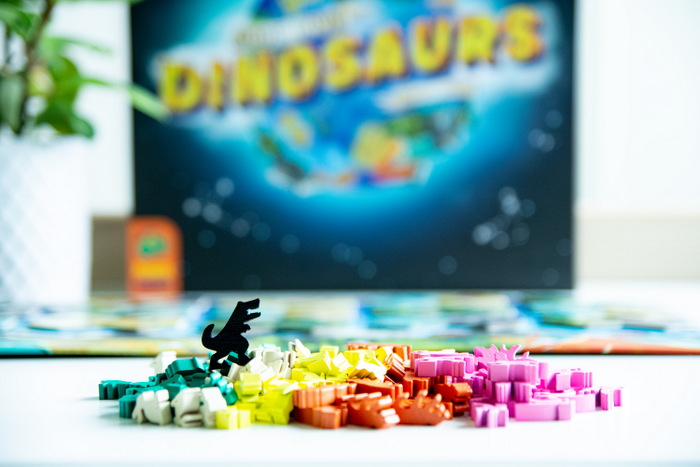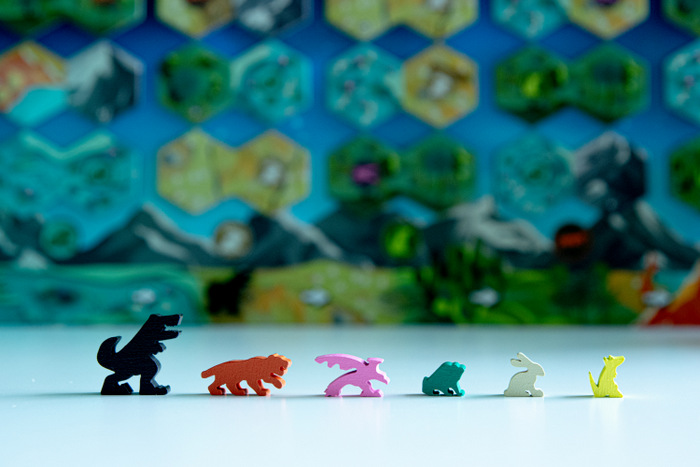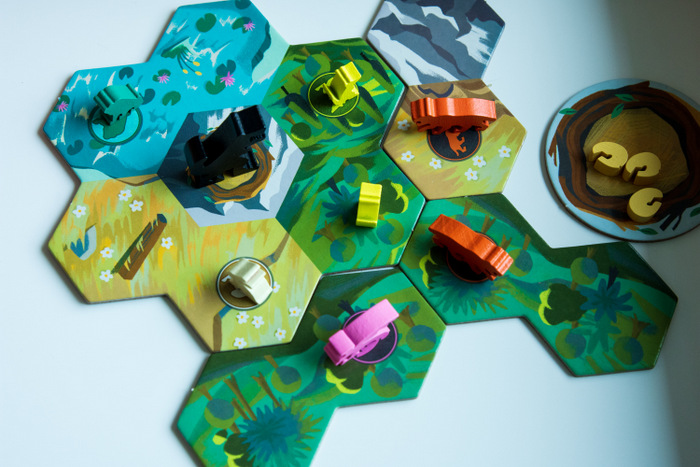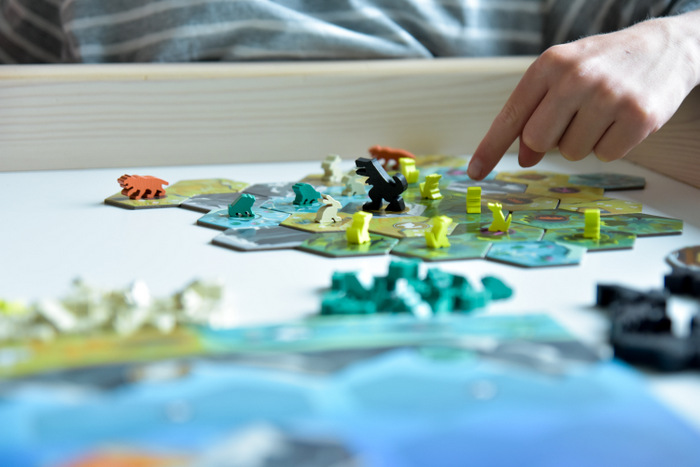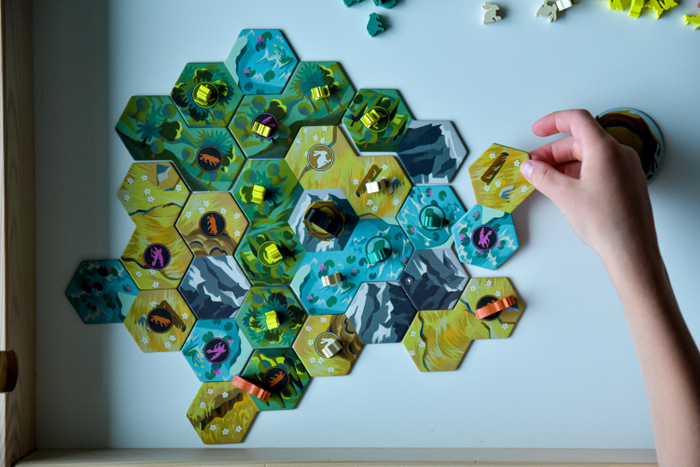Have you ever thought about what kind of world you would create if you got the chance??? Oh, the possibilities…
You’d have to have some kind of food chain though, right?!? Would life on your planet be perpetuated through a similar dance between small organisms and large ones?
THIS is the delicate balance players are going for in Gods Love Dinosaurs, a game that challenges players to create an ecosystem that can thrive in a fluctuating rhythm of prey vs. predators, hunted vs. hunter.
The goal of the game is to orchestrate your planet’s ecosystem with a balanced food chain of small (prey) and large (predator) animals so that smaller animals don’t take over the world and the larger animals don’t go hungry.
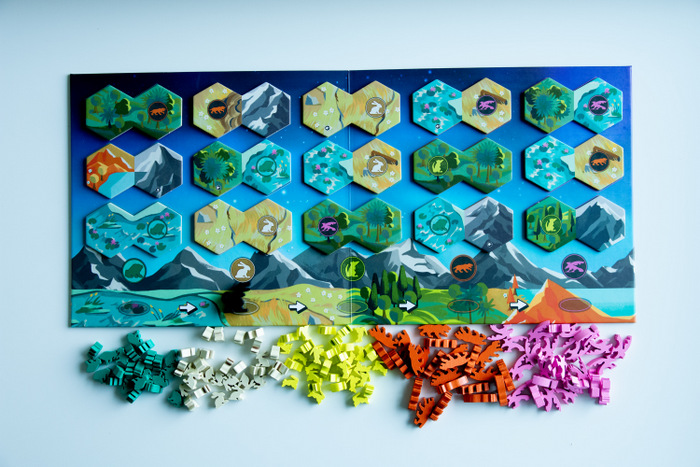
Set up by laying out the ecosystem tiles above the animal board in 4 stacks according to letter (A-D), the eggs and dinosaurs next to the board, and the animal pieces sorted by type below the board. Fill the animal board with tiles from the A stack and start the black dinosaur meeple at the bottom of the first column.
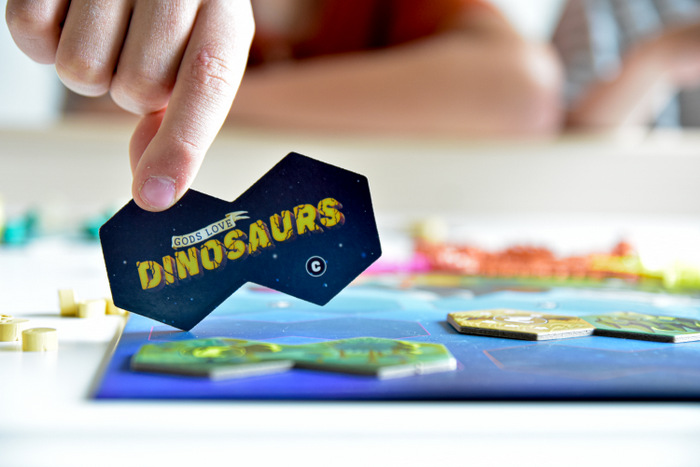 On each turn, players take a tile from the animal board in order and place it adjacent to another tile in their ecosystem. Place the corresponding animal on tiles with animal icons to introduce that animal into your ecosystem.
On each turn, players take a tile from the animal board in order and place it adjacent to another tile in their ecosystem. Place the corresponding animal on tiles with animal icons to introduce that animal into your ecosystem.
Once a column of tiles on the animal board is depleted, ANIMAL ACTIVATION takes place. The animal at the bottom of the now empty column activates and all animals of that type in the ecosystem must be either expanded (prey) or hunt (predator).
- Expanding Prey: place another animal of that type in an adjacent hex of the same terrain type.
- Hunting Predators: move predators 2 or 3 hexes and eat any prey encountered during the movement.
Several turns will take place without activating animals, as this step only happens when an entire column of ecosystem tiles is depleted. Once the activation phase is complete, move the black dinosaur marker to the next animal column and resume regular play, which consists of selecting and placing 1 new ecosystem tile per turn.
IF the dinosaur marker is in the activated animal’s column, a separate set of actions take place.
- Dinosaurs Hatch
- Dinosaurs Hunt
- Dinosaur Marker Moves
- Refill Animal Columns
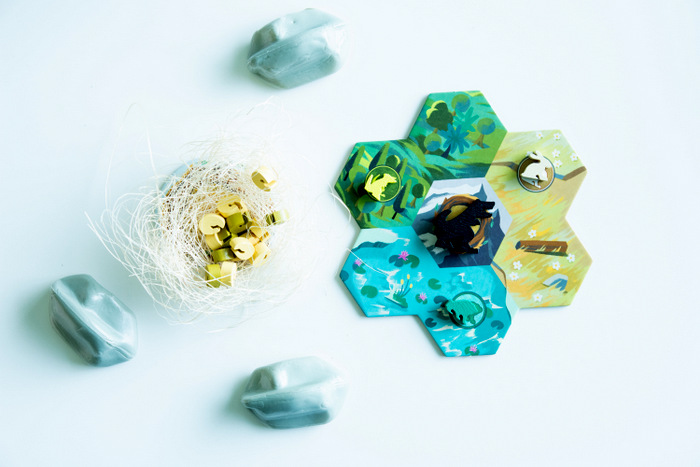
The dinosaurs are the largest animal in this food chain, and when it’s time for the “Dinosaurs Hunt” action, dinosaurs must move through your ecosystem hunting prey and/or predators by moving up to 5 hexes in any direction. Dinosaurs must land on an empty mountain hex after hunting. New dinosaur eggs are earned in this way; 1 egg is laid for each predator a dinosaur eats. Newly laid eggs go in a player’s nest to await hatching in a future Dinosaur Activation Phase.
Once all the Dinosaur actions are complete, the animal board is refilled with ecosystem tiles. When stack A is depleted, move on to stack B, etc.
The game ends when the animal board is depleted of ecosystem tiles. Points are awarded for dinosaur eggs in a player’s nest and dinosaurs in his ecosystem. The player with the most points wins!
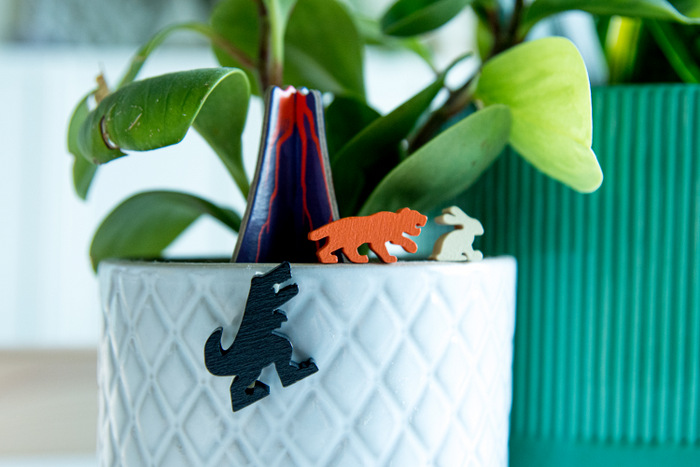
This game is highly strategic but not overly complicated, making it wonderful for family gameschooling. Children as young as 8 years old can strategize, hunt, and build their ecosystems to support more dinosaurs and get the most points!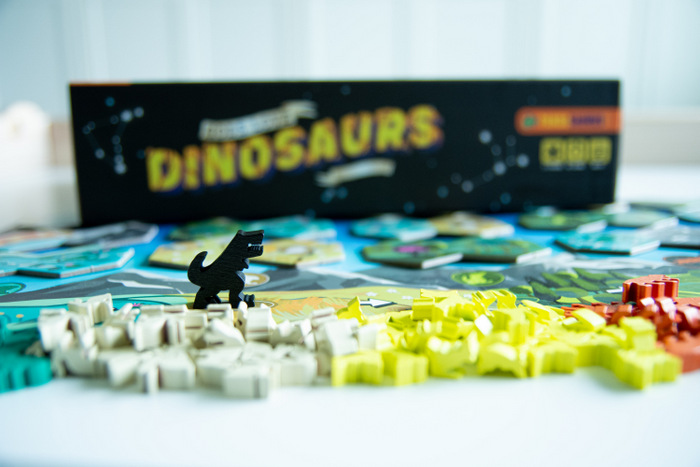
Gods Love Dinosaurs fits into a study of ecosystems, food chains, dinosaurs/prehistoric life, and more. Thanks so much to Pandasaurus Games for another superb educational family board game!
